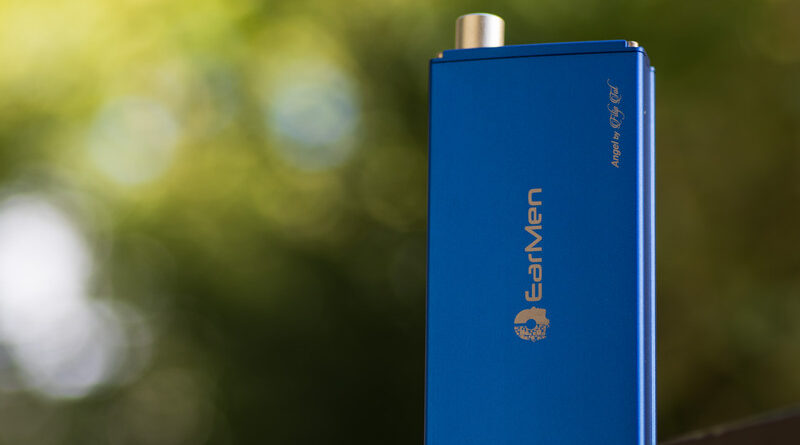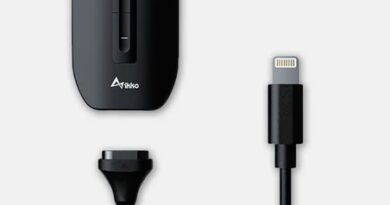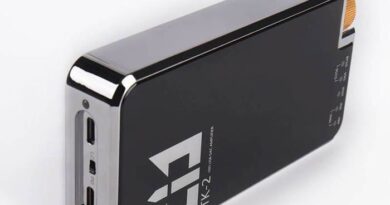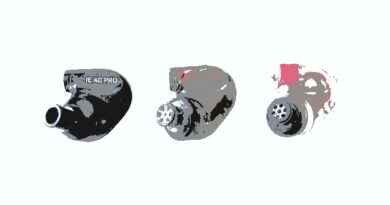Earmen Angel Review – Future Cult Classics
Pros — Exceptionally well built
– Head-turner color scheme
– Gobs of output power
– Fully digital potentiometer
– Resolving-yet-natural signature
– Great staging and separation
– Excellent matching with most planars
– MQA certification and full MQA decoding
Cons — Heavy, bulky design
– No line-in/amp-only function
– Picky about USB cables
– Not for very sensitive IEMs
In this Article
INTRODUCTION
EarMen has made a name with its source gears, and the Angel is the flagship “portable” DAC-Amp offering in its lineup. This also happens to be the first Earmen product I’ll be reviewing, so there’s that.
From a market-positioning perspective, the Angel fills the niche of “portable powerhouse” DAC-Amps that have rather high output power, albeit in a less pocket-friendly manner compared to typical dongles. Usually the idea is to power inefficient planars and high impedance dynamic drivers while on-the-go, or perhaps to settle for a minimal setup that can be moved around in a pinch.
Does the Earmen Angel manage to carve a spot for itself, or is the first attempt at a powerhouse dongle a forgettable one? Let’s find out.
Note: the ratings given will be subjective to the price tier. Earmen was kind enough to provide me the Angel for review.
Headphones and IEMs used: Sennheiser HD650, Hifiman Arya Stealth, Hifiman HE-6se V2, Moondrop Venus, Dunu Zen, Final E5000
Price, while reviewed: $800. Can be bought from Earmen’s Official Store.
PHYSICAL THINGS AND USABILITY
PACKAGING AND ACCESSORIES
I received the Angel without any retail package, since back then a retail package was not even designed yet. So please check other reviews over at head-fi for a proper visual depiction of the packaging and accessories.
BUILD QUALITY
Exceptional, in one word. The blue finish is unique and makes the Angel stand out from a myriad of similarly-toned devices. I imagine this colorway could be divisive, but I find it flashy while being tasteful. A very fine line that Earmen manages to tread well.
The entire build is a three piece construction, with the front and back “caps” being held by 4 screws. The middle shell is milled out of a single piece of aluminum. The front panel of the device has the output jacks (4.4mm and 3.5mm respectively), gain switch, pre-amp mode selector, LED indicator, and the rotary encoder.
The rotary encoder has very smooth feedback with precise “steps” that have the right amount of feedback. It also doubles as the power buttons, since pressing it down is how you turn on or off the device. There is a slight wobble to the wheel for this reason but it’s very common for wheels that can be pressed downwards.
The LED indicator flashes between alternating colors depending on the input selected, the sampling rate/format of the file etc. A more detailed description can be found in the following.
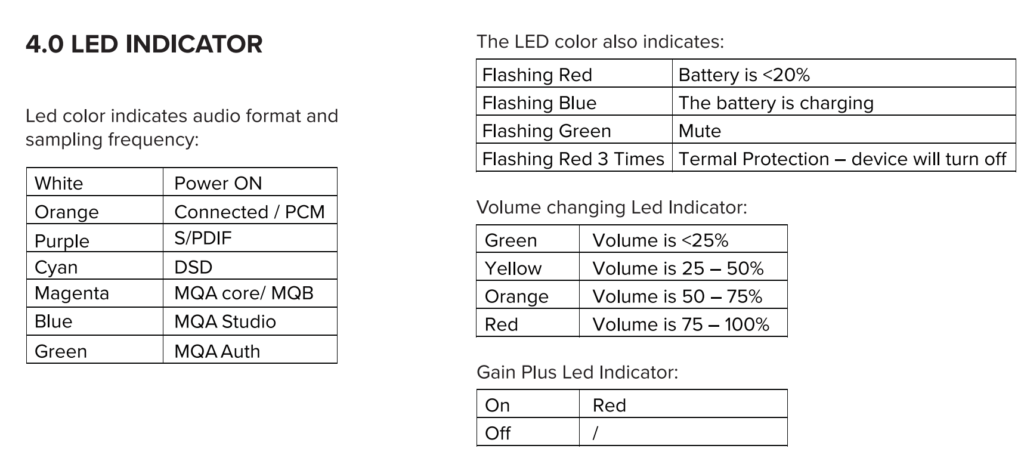
The back houses two USB type-C ports: one for charging, and one for data transmission. The separated inputs are great to avoid any potential interference between the power and data lines, but poses a new challenge: finding a USB type-C cable that works. I have 7 different USB type-C cables, all but one failed to connect the Angel to my PC.
Another oddity is the situation with fast chargers. Basically – the Angel do not charge at all with fast chargers. I tried three different fast chargers, two of them supported USB PD and another supported Quick-Charge 3.0. No dice. In the end, I got success by charging for a regular 5V-2A adapter which was excruciatingly slow.
Update: it turns out that Earmen recommends charging with 5V-2A chargers in the manual. So this limitation is by design.
Full recharge takes over 3 hours. Quite a long time, but the Angel holds charge really well. Standby drain is practically negligible. Moreover, the amp section does not even engage if no headphones are connected, so that’s another nifty power-saving feature.
Now let’s move on the other ports on the back. You have the COAX/TOSLINK input, and finally two line-out ports in balanced or single-ended flavor. A curious omission here is a line-in. That way it would be possible to use the Angel as an amp alone. But alas.
Overall, flagship-grade build quality with no qualms whatsoever regarding the workmanship.
USABILITY
The Angel is rather substantial in size. You can grab it in one hand, but stacking together with a phone, for example, is quite impractical. I find the Angel more suited as a sort of “transportable” device than something truly portable. The 340gm of weight definitely hints toward that direction.
Battery life has been within expectations for a device of its class. When powering the Sennheiser HD650 and Hifiman Arya SE, the Angel lasted me about 7 hours on a single charge. The 2x3000mAh battery pack does the job, though I suspect using IEMs will yield slightly better results. Nonetheless, expect to charge every other day if you are a frequent user.
Another nifty usability feature is how the rotary encoder works. It acts as a fully digital potentiometer for one, and the volume is automatically reset to zero every time you unplug something or turn the unit off.
As a result, the chances of accidentally blasting your ears with high volume becomes diminutive. It does make volume-matching and comparing between multiple IEMs/headphones a chore, but that’s something you don’t do every day.
The dial also works as pre-amp volume control when the line-out voltage is set to “pre-out” via the switch on the front. Setting it to “direct” turns on fixed-voltage line-out mode instead, which is useful when connecting external amps.
SPECIFICATIONS
Earmen does not specify the exact current at a specific load on their website. So I asked them for those figures and they told me that the output power of Angel is:
- Single-ended: 1.62W @32 Ohm
- Balanced: 2.25W @32 Ohm
The Sabre ES9038Q2M is used as the DAC chip, which is the highest end 2-channel Sabre DAC. The rest of the specs are as follows:

TONALITY AND TECHNICALITIES
I find describing the tonality of digital sources a futile exercise, as most of the characteristics depend on the pairing with various headphones and IEMs. Nonetheless, there are some commonalities between all pairings, and in general the Earmen Angel has a “Reference” tuning. Which is another speak for: they are neutral and does not really emphasize on any frequencies.
There is a bit of “excitement” up top, which can be evident while pairing with some warm/laid-back gears, but it’s not overdone. The upper-mids/lower-treble show a hint of the infamous “Sabre glare”, though it’s not distracting and well under control. The staging was consistently wider than average. Rest of it is how it should be – uncolored, close to neutral.
PAIRING NOTES
IEMs
The Angel pairs well with moderately sensitive IEMs with 16ohms or higher impedance. Anything lower with high sensitivity, and you will notice some hiss. Anything lower with low sensitivity (ala Final E5000), you’ll notice that IEMs sound underpowered.
I noticed some hiss with the Campfire Holocene and Dunu Zen (when using Gain+ mode especially). Granted – this DAC-Amp is way overkill for those sensitive IEMs but certain products in this category manages to handle IEMs just as well. I find the Angel to be more geared towards headphone use than IEMs for this reason.
On the positive side, output impedance is lower than 1ohm, so you should not have issues with multi-BA or hybrid IEMs having their frequency response thrown off.
A surprise exception was the current crop of planar IEMs, which paired wonderfully. Dynamics were spot on, and the staging was somewhat widened (a weakness of most if not all planar magnetic IEMs in the current market, the non-Audeze ones that is).
Headphones
Powering headphones is where the Angel flexes its muscles, especially planar magnetic headphones that do not require absurd wattage.
I have tried a number of Hifiman planars with the Angel and apart from the HE-6se V2 (83dB/mW @ 50 ohms) – the rest of them were adequately powered. The pairing with Arya SE was something exceptional. Great bass slam, enveloping headstage, precise imaging, no harshness in treble – just wonderful all around. If you own an Arya SE – try the Angel.
Sennheiser’s high impedance dynamics were driven well too. The HD650 lacked the warmth and tactility that you get on an OTL tube amp, but it sounded as good as on any solid state amp. There is plenty of voltage swing here to fully power the drivers (usually HD650 and the likes require >= 6Vrms to sound their best, I will link to the calculations here if I can find them again).
A note about the Gain+ mode here: it adds some distortion to the sound which might be distracting esp on planars. I did not need to use the Gain+ mode that much but your mileage may vary. I’d recommend not using it until you absolutely need to.
Overall, if you are predominantly a headphone user, the Earmen Angel will be a fantastic source for most of them, unless all you own are the Hifiman Susvara, Abyss 1266, HEDDPHONE V2, or the likes. In which case – none of the portable sources can really help.
As standalone DAC
The DAC section is very competent and competes well with other desktop DACs in this range, e.g. SMSL M400. While those desktop DACs have more outputs and features like filter selection, the sonic differences are fairly minimal considering the massive difference in footprint. There’s also MQA decoding capabilities for those who believe in MQA.
As a result, I can see the Angel being a transportable all-in-one while on the go, and a nifty DAC connected to some powerful headphone amps when at home or desk. You may have to invest into some 4.4mm to XLR cables but the flexibility on offer is excellent.
COMPARISONS
vs iFi xDSD Gryphon
The iFi xDSD Gryphon has become one of the most popular portable DAC-Amps around. We reviewed it and found it to be a great all-rounder.
When it comes to build quality, both are exceptional. The Gryphon has a sleeker, more modern design, whereas the Angel has the subtlety of a muscle car. Poor car analogies aside, the weight difference between them is substantial, with the Gryphon being over 100gm lighter.
Despite the lighter weight, I don’t think Gryphon makes a suitable “stack” either, since the wide footprint makes it awkward to hold the phone and the Gryphon together. To aid in that, iFi has added Bluetooth DAC functionalities to Gryphon, which is absent on the Angel. Gryphon also has the ability to select different filters, and the on-screen display is a helpful addition.
The volume pot on the Gryphon is analog, vs the digital rotary encoder on the Angel. Gryphon also has hardware EQ functionalities which are fun to use.
The Angel has been on the backfoot until now, but it hits back with sheer output power. Planar magnetic and high impedance dynamics are far better driven on the Angel, with loads of headroom to spare. The DAC section is also better overall, with noticeably wider stage and better dynamics when connected to external amps.
The Gryphon pairs better with IEMs, and the IEMatch switch is another helpful addition. To summarize: for predominantly IEM usage and BT capabilities, the Gryphon is the better choice. For using as a standalone DAC and to power planars or high impedance dynamics – the Angel is a no-brainer.
CONCLUDING REMARKS
The summary kind of writes itself – if you are a predominantly headphone user, and need something to carry on the go or act as a solid DAC when on the desk, the Earmen Angel is one of the best options out there. The build is excellent, the usability features handy, and the price is rather competitive when you consider the overall market of such devices.
The biggest downside here is the slight hiss with sensitive IEMs, and the lack of a line-in which would allow DAP users to use the Angel as an amp. Given the target demography, these are not deal breakers, as when connected to external amps or full-size cans the Angel just shine.
I think that the Earmen Angel will gain a following over time, as devices of their class usually do. As such, I have no qualms to recommend the Angel for headphone users who need something portable.
MY VERDICT
4.25/5
DISCLAIMER
Get it from Earmen Store
Our generic standard disclaimer.
PHOTOGRAPHY
You find an INDEX of our most relevant technical articles HERE.



